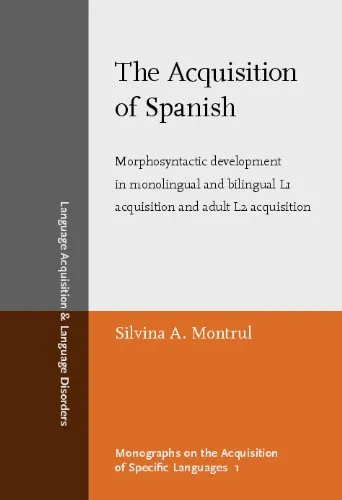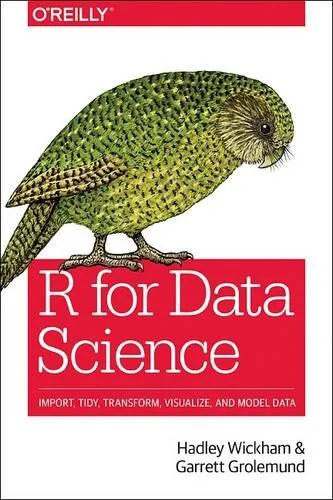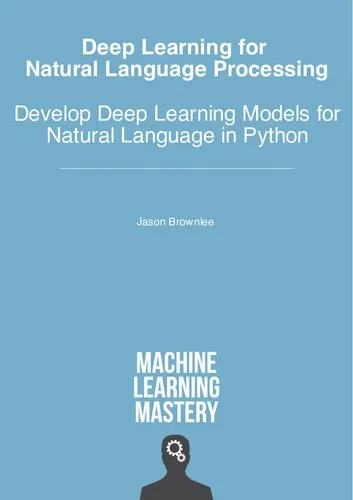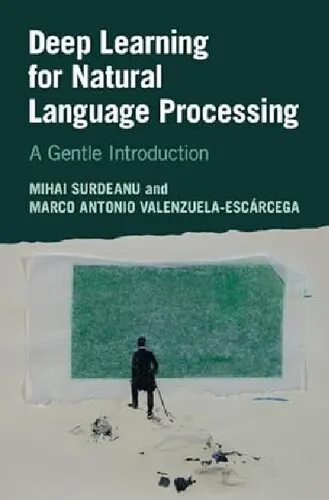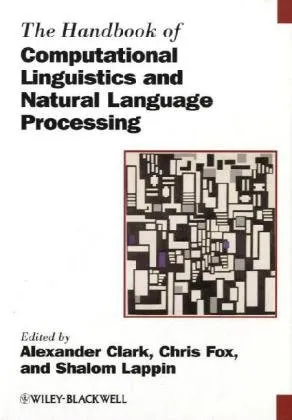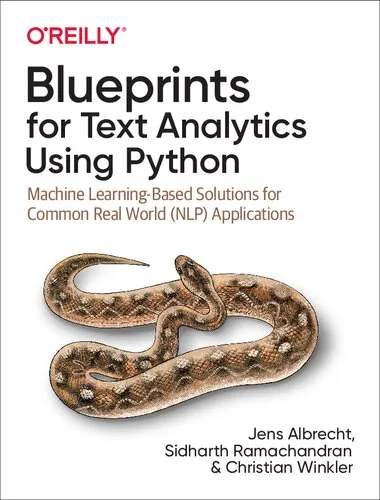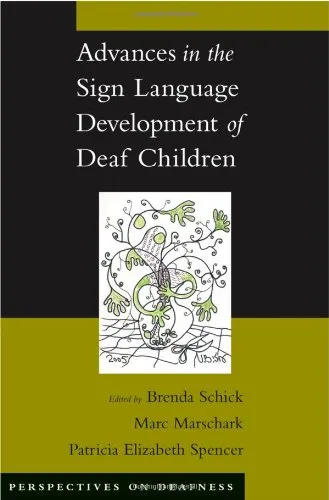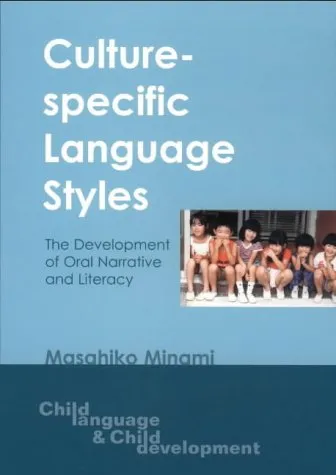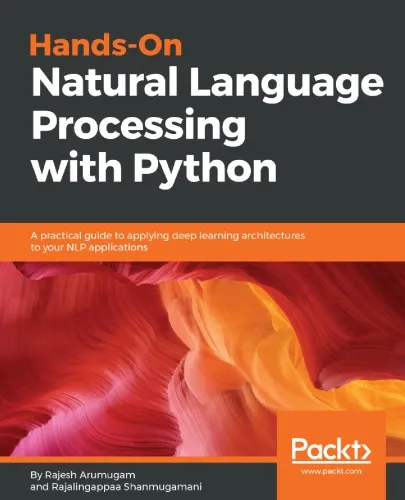The Acquisition of Spanish: Morphosyntactic Development in Monolingual and Bilingual L1 Acquisition and Adult L2 Acquisition (Language Acquisition & Language Disorders, Volume 37)
4.8
بر اساس نظر کاربران

شما میتونید سوالاتتون در باره کتاب رو از هوش مصنوعیش بعد از ورود بپرسید
هر دانلود یا پرسش از هوش مصنوعی 2 امتیاز لازم دارد، برای بدست آوردن امتیاز رایگان، به صفحه ی راهنمای امتیازات سر بزنید و یک سری کار ارزشمند انجام بدینکتاب های مرتبط:
Introduction
کتاب The Acquisition of Spanish: Morphosyntactic Development in Monolingual and Bilingual L1 Acquisition and Adult L2 Acquisition یک اثر مهم در حوزه زبانشناسی است که به بررسی تحولات نحوی و صرفی در یادگیری زبان اسپانیایی میپردازد. این کتاب در سری Language Acquisition & Language Disorders منتشر شده است و به عنوان جلد ۳۷ این مجموعه به چاپ رسیده است.
خلاصهای از کتاب
این کتاب به تفصیل به بررسی چگونگی یادگیری زبان اسپانیایی به عنوان زبان اول (L1) و زبان دوم (L2) میپردازد. کتاب به تحلیل توسعه morphosyntax در دو گروه از یادگیرندگان تکزبانه و دوزبانه میپردازد. موضوعاتی همچون ساختارهای نحوی، پیچیدگیهای صرفی، و تاثیرات تفاوتهای زبانی بر فرآیند یادگیری در این اثر بررسی میشوند. نویسنده با استفاده از دادههای تجربی و روشهای تحقیق مدرن، تلاش میکند تا شناختی گسترده از فرآیندهای زبانی در یادگیری زبان اسپانیایی به دست دهد.
کلید بردهای کتاب
- درک عمیقتری از فرآیندهای یادگیری morphosyntax در زبان اسپانیایی به عنوان L1 و L2.
- بررسی تفاوتهای بین یادگیرندگان تکزبانه و دوزبانه و تأثیر این تفاوتها بر یادگیری.
- ارائه بینشهای جدید در زمینه چگونگی تعامل بین زبانهای مختلف در مغز انسان.
نقلقولهای معروف از کتاب
"یکی از بزرگترین چالشها در یادگیری زبان دوم، عبور از مرزهای زبانی و فرهنگی است که خود را در ساختارهای نحوی و صرفی نشان میدهد."
"در دوران کودکی، مغز انسانها به طور طبیعی برای یادگیری چندین زبان طراحی شده است، و این توانایی در مراحل اولیه رشد خودنمایی میکند."
چرا این کتاب مهم است
اهمیت این کتاب در حوزه یادگیری زبان و زبانشناسی به دلیل تمرکز دقیق آن بر روی فرآیندهای morphosyntactic در یادگیری زبان اسپانیایی به عنوان زبان اول و دوم است. این کتاب به عنوان یک مرجع معتبر توانسته است نقشهای مختلفی که زبانها در یادگیری و توسعه مغزی ایفا میکنند را آشکار کند. تحقیقات جامع و دقیق ارائهشده در این اثر، میتواند راهگشای مطالعات بیشتر در زمینههای مختلف زبانشناسی و روانشناسی زبان باشد و به شناسایی نقاط قوت و ضعف سیستمهای آموزشی کمک کند. این کتاب نه تنها برای پژوهشگران و متخصصان زبانشناسی، بلکه برای معلمان و دانشجویان نیز منبعی سودمند به شمار میآید.
Introduction
Welcome to an in-depth exploration into the dynamic and intricate journey of acquiring the Spanish language. Conceived for linguists, educators, and language enthusiasts, 'The Acquisition of Spanish: Morphosyntactic Development in Monolingual and Bilingual L1 Acquisition and Adult L2 Acquisition' delves into the nuances of how both monolingual and bilingual speakers learn and master Spanish. This book, part of the esteemed Language Acquisition & Language Disorders series, Volume 37, provides a comprehensive blueprint for understanding the various processes and stages involved in Spanish morphosyntactic development in different learning contexts.
Detailed Summary
'The Acquisition of Spanish' meticulously discusses the process of Spanish language acquisition in multiple contexts. Beginning with a foundation in linguistic theory, the book navigates through the initial stages of monolingual first language (L1) acquisition, where young children acquire their mother tongue. It draws parallels and contrasts that with bilingual L1 acquisition scenarios, wherein children grow up learning two languages simultaneously.
Furthermore, the book intricately examines adult second language (L2) acquisition, showcasing how different cognitive and environmental factors impact the learning trajectory. Each chapter delves into specific morphosyntactic elements—such as verb conjugation, gender agreement, and syntactic structures—analyzing developmental patterns. The theoretical discussions are robustly supported by empirical data from various studies, offering readers a grounded and nuanced understanding of Spanish acquisition.
Key Takeaways
- Understanding of diverse processes in L1 and L2 acquisition.
- Insights into the roles of cognitive and socio-cultural factors in bilingual development.
- Comprehensive analysis of morphosyntactic development stages.
- Comparison between monolingual and bilingual acquisition pathways.
Famous Quotes from the Book
"The art of language acquisition is not merely a tale of memorization; it is a sophisticated dance of comprehension, interpretation, and creativity."
"In the bilingual mind, languages do not merely coexist; they coalesce to form a unique tapestry of communication."
Why This Book Matters
This book is pivotal for those seeking an in-depth understanding of how Spanish language proficiency can be achieved in varied contexts. It extends beyond theoretical discussions, providing practical insights that can inform teaching methodologies and language policy design. By bridging the gap between theory and practice, it illuminates the cognitive pathways that underlie language acquisition, offering a significant contribution to the fields of linguistics and education.
Furthermore, it serves as a critical resource for educators who aim to foster bilingual environments, offering them a deeper grasp of the intricacies involved in nurturing Spanish language skills among diverse learner groups. Researchers and scholars interested in morphosyntactic development will find substantial empirical evidence and analysis that can further their studies in language acquisition.
In essence, 'The Acquisition of Spanish' is not only a scholarly text but also a beacon for anyone intrigued by the rich complexity of language learning. Its contribution to understanding the nature of Spanish acquisition is invaluable, ensuring its status as a key work in the field of language acquisition and disorders.
دانلود رایگان مستقیم
شما میتونید سوالاتتون در باره کتاب رو از هوش مصنوعیش بعد از ورود بپرسید
دسترسی به کتابها از طریق پلتفرمهای قانونی و کتابخانههای عمومی نه تنها از حقوق نویسندگان و ناشران حمایت میکند، بلکه به پایداری فرهنگ کتابخوانی نیز کمک میرساند. پیش از دانلود، لحظهای به بررسی این گزینهها فکر کنید.
این کتاب رو در پلتفرم های دیگه ببینید
WorldCat به شما کمک میکنه تا کتاب ها رو در کتابخانه های سراسر دنیا پیدا کنید
امتیازها، نظرات تخصصی و صحبت ها درباره کتاب را در Goodreads ببینید
کتابهای کمیاب یا دست دوم را در AbeBooks پیدا کنید و بخرید
1219
بازدید4.8
امتیاز0
نظر98%
رضایتنظرات:
4.8
بر اساس 0 نظر کاربران
Questions & Answers
Ask questions about this book or help others by answering
No questions yet. Be the first to ask!
